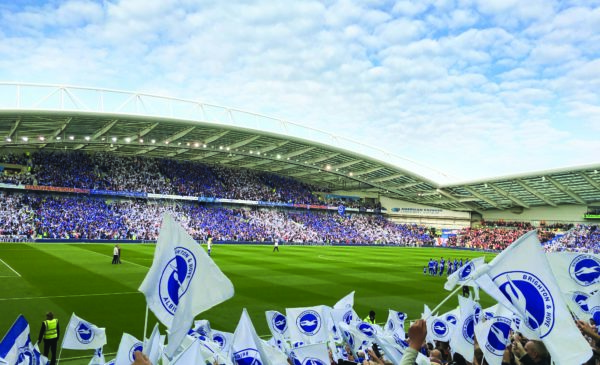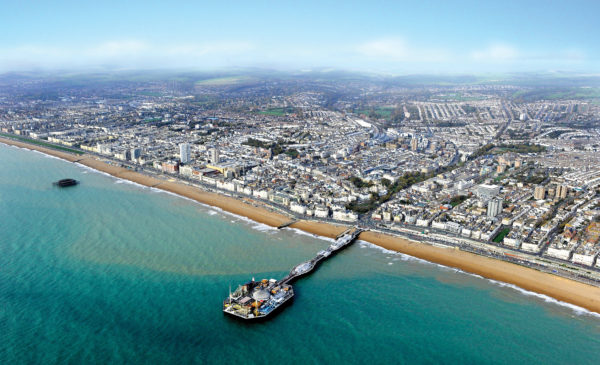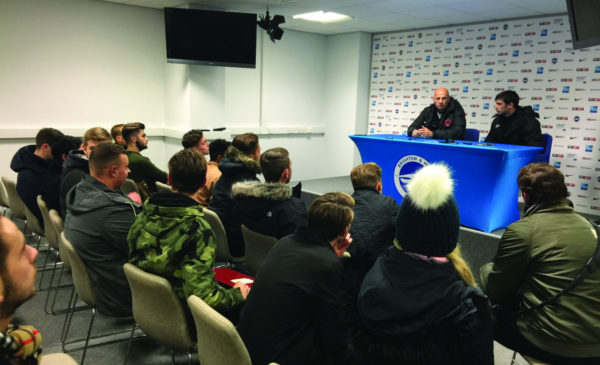At 4.54 pm on Saturday, October 24, those in Norwich City’s Gunn Club hospitality lounge leapt from their seats in celebration as Mario Vrancic’s injury-time winner against Wycombe Wanderers sent the Canaries into the Championship play-off places. In a normal season, those jubilant scenes inside the hospitality suites dotted around Carrow Road would be accompanied by roughly 25,000 home fans situated in the stadium’s four stands. But this is far from a normal season.
Instead of watching the game through the huge bi-fold doors which separate the corporate lounges from the terraces, Canaries supporters saw the Bosnian’s superb free-kick on television screens, while blinds blocked any view of the pitch. The absurd logic of the COVID-19 restrictions meant that while Carrow Road’s 27,244 open-air seats lay empty, fans were legally allowed to gather inside and watch their team at the same venue.
The simple fact is this – if EFL stadiums do not start partially reopening very soon, clubs will go under. Having fans watching games on TV screens inside stadiums is rubbing salt in the wounds of many League One and Two clubs, where gate receipts equate to a far larger share of yearly revenue. After the phased return of fans in grounds from October 1 was halted after a spike in national infections, EFL grounds look unlikely to welcome supporters until at least March 2021.
The congested schedule around Christmas is often what immediately look for when league fixtures are first released in June. Seeing groups of guys and girls dressed as Santa and that feeling of excitement after unwrapping tickets for a Boxing Day game are just two of the usual ways in which football and the festive season perfectly overlap. This year, forget it.
Though you won’t be able to go to a ground and watch a game of football while social distancing in an open-air environment this December, fear not, for Christmas at the Royal Albert Hall will be in full swing. On December 9, when the South Kensington venue hosts its first festive performance, Christmas with the Royal Choral Society, 5.4 miles away Brentford will be playing Derby County in their empty, brand new £71 million stadium.
According to the Royal Albert Hall’s website, the venue’s seasonal performances will be watched by a maximum of 2,500 people at a time. The Hall’s pre-COVID capacity was 5,272, which means that for sold-out shows this Christmas, 47.4% of the seats inside the Victorian-era building will be occupied.
So, to put that in a footballing context for you: if the Government were to allow 47.4% of Old Trafford’s 76,000 seats to be filled, that would be 36,024 Manchester United fans back watching their team.
If you look further down the football league ladder, think how much the EFL’s current bottom-placed side, Southend United, would benefit from a 47.4% capacity. A maximum of 5,873 in Roots Hall would allow programme vendors, stewards, kiosk staff and all the other men and women who create the matchday experience, to return to work.
Although letting fans back into stadiums appears to have been placed low down on the Government’s to-do list, the importance of theatres and certain other indoor venues reopening should not be overlooked. Any steps taken to restore a semblance of a pre-COVID world should be welcomed and I hope everything goes according to plan at all the Christmas shows up and down the country.
But Oliver Dowden, Secretary of State for Culture, Media and Sport, needs to acknowledge that the restrictions on fans returning to football stadiums is simply illogical. It can be done safely – the pilot events at EFL games in September proved that.
In response to the postponement of a phased return of fans to matches in October, EFL chairman Rick Parry, said: “any supporters attending EFL fixtures, in vastly reduced numbers, would have been required to adhere to social distancing and the rule of six.” If Government protocols are followed down to a tee, where is the scientific evidence that allowing fans back into stadiums is more of a danger than those same procedures being followed inside a theatre?
Vrancic’s free-kick hitting the back of the Wycombe net in the 91st minute is the kind of moment that makes attending a football match worth the effort. From sitting in arctic conditions for 90 minutes to sprinting along the platform to catch the last train for 12 hours, a single moment can justify enduring the bad times.
But there will be no more until the Government sees sense.








